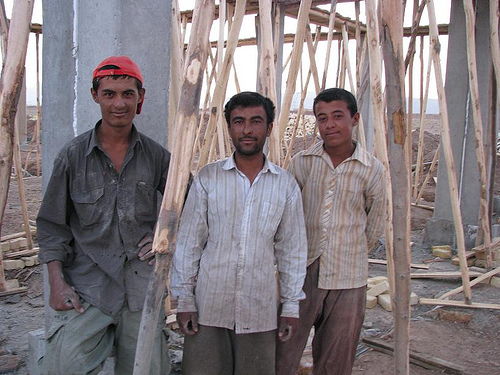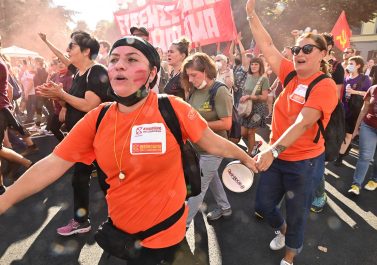(Translated from Wildcat no.106: www.wildcat-www.de)
The Black Lives Matter movement is an opportunity for Afghan people to draw attention to their situation (not only) in Iran. In May and June there were many protests worldwide. At the beginning of May, 45 Afghan refugees were tortured and thrown into a river by Iranian border police, many drowned. On June 3, 2020, police opened fire on a car in which Afghan fugitives were travelling to Tehran; the car went up in flames. At least three people were burned to death, four were injured and several are missing. Eyewitness videos show people burning alive and a boy asking for water.
Under the hashtags “Give me water, I’m burning” and “AfghanLivesMatter” anger and protest were expressed and people mobilised for demonstrations. Surprisingly many people from different political backgrounds came to protests in Germany. Mourning and helpless anger dominated the protests, there was little coming together with others. Only a few exiled Iranians took part in the demos, mainly because of the political confusion about who the organizers were. In Berlin, the protestors were politically left-wing, whereas in Frankfurt a poster saying “Afghan and Iranian women cannot breathe because of the Islamic regimes” was welcome.
Cheap labour in Iran
Iran exports more than twelve billion US dollars worth of goods and services to Iraq every year. Afghanistan in turn exports cheap labour to Iran, without which the economy there would never have grown so strongly in recent decades. The Islamic Republic owes this constellation to the civil war in Afghanistan and the invasion of the USA in Afghanistan and Iraq. Iran cooperated with the USA in overthrowing the anti-Iranian regimes of the Taliban and Saddam Hussein. Iraq imports everything from cars and chips to gas and electricity from Iran. Every year two million Iraqis go on a pilgrimage to Iran. Both countries are planning a 354 km long motorway between the Iranian border and the holy city of Najaf in central Iraq, as well as a railway line that will connect cities on the south-western border with the Iraqi port city of Basra.
There are an estimated 2.5 million Afghan refugees in Iran. Their number and composition has changed compared to the 1980s. After the fall of the Taliban, many returned to Afghanistan, others were recruited for foreign missions, particularly in Syria, in order to obtain permanent residence. Some see Iran as a transit country to Turkey and then to Europe, some as a place of temporary work and protection.
Only a few are recognised refugees or have the prospect of a regular residence permit. Others work in the informal sector for starvation wages on the countless construction sites (which made the Iranian construction boom of recent years possible), or as plant security, caretakers, cleaning staff and in the agricultural and meat industry. Because of the common language they find work easily, even though many of the Afghans are illiterate. Most of the illegal workers are at the mercy of arbitrariness by entrepreneurs and institutions. If they protest against their poor working conditions, the employer often threatens to report them to the authorities. With the economic crisis, the repeated currency devaluations (in which the wages earned in Iranian Rials lost value compared to the Afghani) and the corona epidemic, their situation has become even more precarious. Several hospitals refused to treat Afghan citizens. There are no reliable figures on how many Afghans in Iran have died of Covid-19.
Again and again tens of thousands of people are deported to Afghanistan (Europe, too, makes mass deportations possible by declaring Afghanistan a “safe country of origin”). In the reporting Afghanistan and Afghans are almost exclusively mentioned in negative terms: Drugs, rape, backwardness, etc. According to a survey in an Iranian newspaper, 44 percent of the Tehranians interviewed are in favour of Afghans in Tehran having the right to live in only one particular district.
Half of the 35 million people in Afghanistan have less than one US dollar per day at their disposal. Every day, three coal workers die because they are not qualified for the job or because they are children. Capital exploits the Afghan misery not only to worsen the situation of the working class in Iran through the forced immigration of poor Afghan people, but also to divide the class itself.



